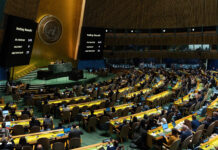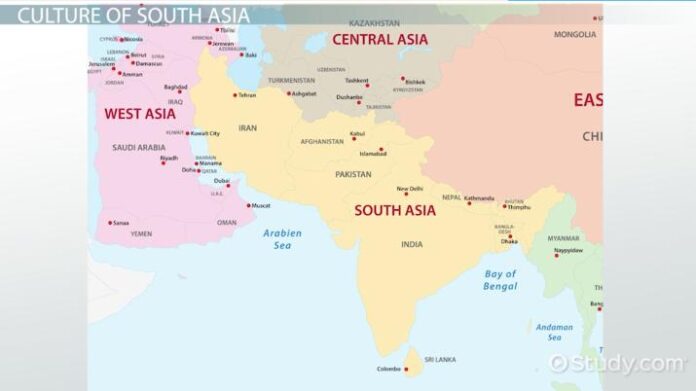In present-day global society, we find a contradiction, a gap, between cultural identity and practices of politics and society as well, especially after the coming of globalisation and liberalisation which know no national boundaries and simply believe in trans-border socio-political, economic and cultural exchanges on a large scale, paving the way for the clash of social identities on the one hand and nationalism on the other.
Even the clash itself works in both ways-between and among the nations where people of different cultural identities live and within the same nation which is composed of people having dissimilar cultural communities and each and every community is conscious enough to protect and promote its own, inherited identity, obtained in the name of culture and civilization. In this context, the word ‘culture’ has got an extended meaning and directly relates to nature, a part of biology and genetics which is the basis of our physical features and our environment and surroundings that also shape our identity, and cultural diversity means differences in both senses.
In today’s state system practically all types of identities are governed and controlled by political, administrative and legal structures framed by the government. As a result of the transnational exchanges on a large scale with global access of diverse expat, diaspora and migrant communities, segments of people with these identities have become international actors who desire to see and feel the development of their area and community in worldly relative terms. Thus, the different cultural identities of South Asian countries, although having different cultures are one in feeling and requirement. And this is why the governments of the day are focusing loudly on inclusive growth to get satisfactory results or appease all the bases of society and politics.
The region of South Asia and its peoples present a picture of diversity in unity, indeed of immense diversity within a very broad contour of unity. Among them there is great diversity in natural attributes– imposing hills and mountains, lush green river plains, arid deserts and brown plateaus. The South Asian societies are marked by a plural character in terms of languages, cultures, regions and religions. The peoples of South Asia speak at least 20 major languages and if we include the more important dialects, the count rises to over 200. The very diverse languages and language families of South Asia have made enormous contributions to world literature from ancient to modern times.
The major countries of South Asia also share a common historical past in the form of the British colonial rule, but in terms of political stability, economic regeneration and socio-cultural change they remained poles apart in the post-Independence period with the exception that they cooperated each other both at the bilateral as well as multilateral levels under the umbrella of such forums as the Economic and Social Commission for Asia and Pacific (ESCAP), the Non-Aligned Movement and the Commonwealth. The years following their independence were full of internal characteristics of the polities comprising the region, which ranged widely from democratic, federal and parliamentary to monarchical and unitary.
The region of South Asia shares certain things in common, and they are the religious–cultural heritage of the ancient and medieval times, and the administrative, political, educational, economic institutions. Adherents of major world religions, Hinduism, Islam, and Buddhism are found in the Subcontinent. Hinduism with its ancient roots, modern transformation and multiple interpretations, plays a vital part in the culture and politics of the subcontinent. The greatest cultural and political achievements of Islam have taken place in the Subcontinent, where more than 400 million of the world’s 1.3 billion Muslims live today. Each of the three most populous countries of South Asia – India, Bangladesh and Pakistan, have nearly 140 million Muslims, next only to Indonesia as the largest Muslim countries in the world. Buddhism, apart from the formal adherents in the land of its birth, continues to flourish in Sri Lanka and the Himalayas as well as in East and Southeast Asia. South Asia has also significant numbers of Jain, Zoroastrian, Christian and Sikh minorities.
Developments in several parts of the world are prompting scholars and policy makers to re-examine old theories of terrorism. The terrorist slaying has belied the arguments that, ‘Simply killing a lot of people has seldom been a terrorist objective. Terrorists want a lot of people watching, not a lot of people dead. It, in general, challenges the secular fabric of South Asia.
In the spheres of culture, economy, politics and society the modern South Asian history witnessed a number of significant changes in which the pivotal role was played by the intermediate social groups in the construction and continuation of the British Raj. As a result of these social groups the colonial state succeeded in intervening in the earlier communal and caste categories. They also refashioned the social relations of class by the linking of Indian economic regions to a wider capitalist system, and thus created a new group in the Subcontinent’s society for their benefit.
The states of South Asia emerged as sovereign entities after a prolonged struggle against colonialism. In the post-colonial era, nation building became an arduous task. It was all the more challenging for multicultural states to blend the diverse religious, linguistic and ethno-cultural groups into a national mould. The majority of these states devised the mechanism of a secular democratic order to achieve this objective.
The departure of the Raj left a legacy of uncertain frontiers and other disputes among the legatee states. It was complicated further by the lack of self – confidence in the leadership elites of the new nations who frequently direct the fears of their citizens against neighbouring nations in a mistaken belief that this will strengthen the spirit of nationalism and inspire internal cohesion. Real problems among neighbours do exist and in the South Asian System we can easily discern two types of dialectical struggles that have in the past influenced the nature of ties in the region. One type of struggle is by India for a regional role of dominance, maturing into either a sphere of influence or a hegemonic order. Another is primarily influenced by India’s ambitious role, is the struggle by Pakistan and others for autonomy, independence and a sovereign existence.
Terrorism has profoundly influenced inter–state relations in South Asia. With the world’s fastest-growing markets, fastest–rising military expenditures and most serious hot sports coupled with a toxic stew of boiling religious, political ethnic, strategic and historical animosities, made all the more volatile by endemic poverty, illiteracy and the sheer agony of daily existence, Asia holds the key to the future international security order.
Much of Asia’s terrorist violence is concentrated in its southern belt, which in the past decade emerged as the international hub of terrorism. This southern part of Asia, encompassing Afghanistan, Pakistan, Uzbekistan, Tajikistan, Chinese-ruled Xinjiang and Tibet, India, Nepal, Sri Lanka, Bangladesh and Myanmar, are wracked by terrorist, insurgent, and separatist violence in a manner unmatched elsewhere in the world. The number of annual fatalities in terrorist–related violence in South Asia far exceeds the death toll in the Middle East, the traditional cradle of terrorism. The entire expanse from the Middle East to South-East Asia is home to militant groups and troubled by terrorist violence posing a serious challenge to international and regional security.
Developments in several parts of the world are prompting scholars and policy makers to re-examine old theories of terrorism. The terrorist slaying has belied the arguments that, ‘Simply killing a lot of people has seldom been a terrorist objective. Terrorists want a lot of people watching, not a lot of people dead. It, in general, challenges the secular fabric of South Asia.























